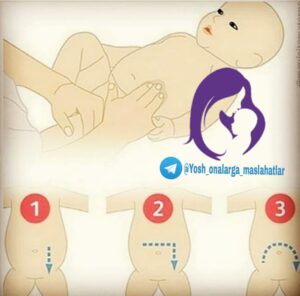SHARE WITH FRIENDS:
Abdominal pain is often observed in babies. Usually, the pains start at 3 weeks, the pains peak at 6-8 weeks, and then they start to subside. It disappears by the end of the 3rd month and the beginning of the 4th month. Abdominal pain bothers mainly in the afternoon and at night. During pain, the child suddenly screams and cries, and in the meantime seems to calm down. After some time, the crying again reaches its climax. While crying, she kicks her legs and cries. Today we will talk about ways to help and prevent colic in babies
The first aid is to stroke the abdomen gently. This method is done in 3 steps.
✔️ Put a warm compress on the abdomen, for example, an ironed film, and move it around the room for a while
✔️Exercise your legs in the bicycle method or keep your legs straight and put them slightly on your head
.
☝️Follow the recommendations below to prevent stomach upset
.
👉 Keeping the breast right for the child. I've written about it many times in my previous posts. The real solution to any problem during breastfeeding is to keep the baby on the breast correctly
🍼If you feed your baby artificially, pay attention to holding the bottle correctly
Do not allow air to enter with the milk during feeding
👉before breastfeeding, lay the child on his stomach for 5-10 minutes (the excess air in the stomach will come out💨)
👉 after breastfeeding, carry the child in your arms in an upright position (so that he burps and expels the air in his stomach)
👉 if you put the child on his side while sleeping, his stomach will not rest
👉you should also avoid mush, peas, doughy foods, fried and fatty foods.
If a two-month-old baby sucks well, has regular bowel movements, does not have any skin rashes (atopic dermatitis, appearance of diathesis), sleeps well during the day, is cheerful and active while awake, then there is nothing to worry about. Usually, by 4-5 months, the rest of the abdomen decreases.
